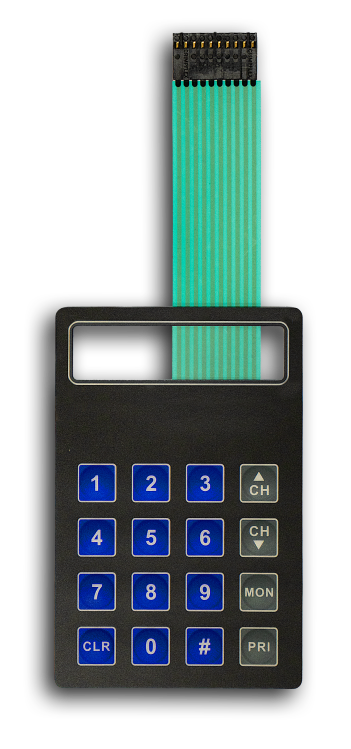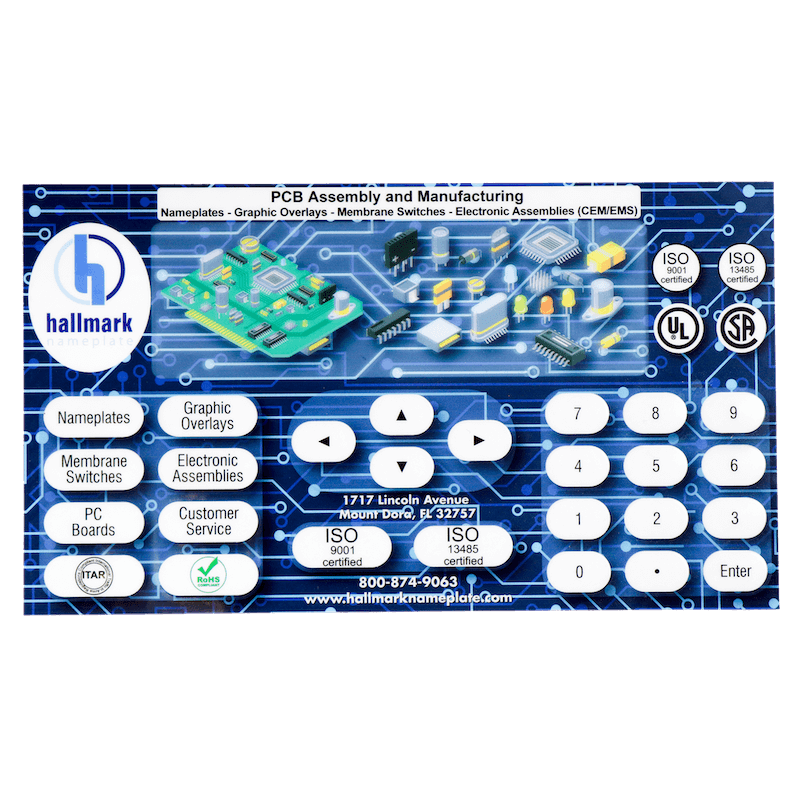Choosing the Right Membrane Switches for Your Product’s Needs
Choosing the Right Membrane Switches for Your Product’s Needs
Blog Article
Comprehending the Significance of Membrane Switches in Individual Interfaces
Membrane switches are important elements in the design of reliable individual interfaces, assisting in not just functionality however likewise enhancing aesthetic charm and user interaction. As we discover the various benefits and future trends connected with Membrane innovation, it comes to be clear that these switches are more than just parts; they represent a merging of development and practicality.
What Are Membrane Switches?

The spacer layer, which contains sticky properties, enables the splitting up of the circuit layer from the overlay, ensuring that the button stays in a non-activated state up until pressed. When pressure is related to the overlay, it presses the spacer layer, bridging the space and finishing the circuit in the underlying layer. This design not only decreases the physical area required for standard mechanical switches but additionally boosts the longevity of the tool, as Membrane switches are usually resistant to dirt, wetness, and various other environmental aspects.
Generally located in applications ranging from customer electronics to medical devices, Membrane buttons are indispensable to modern-day technology, giving a effective and easy to use user interface that aligns with contemporary style requirements.
Benefits of Membrane Buttons
While many button innovations exist, Membrane Switches deal distinct advantages that make them particularly preferable in various applications. Among the key advantages of Membrane buttons is their small style, which permits space-saving applications in devices where real estate is limited. Their slim account not only boosts visual charm however additionally promotes light-weight construction.
One more significant advantage is their resistance to environmental variables. Membrane switches are normally secured versus moisture, dirt, and contaminants, making them optimal for use in requiring settings, such as medical devices and commercial tools. This sturdiness extends the life-span of the switch, lowering maintenance prices and enhancing integrity.
Additionally, Membrane buttons can be tailored to meet specific style requirements, incorporating special graphics and colors that boost user communication. Their tactile feedback choices can additionally be tailored to supply a satisfying customer experience. In addition, Membrane buttons are economical, specifically in high-volume applications, as they can be produced successfully.
Applications in Various Industries

In the customer electronics field, Membrane switches prevail in devices look at more info such as microwaves, cleaning devices, and remote controls. Their tactile responses and aesthetic options enhance individual experience while providing a smooth, modern look. Additionally, auto producers make use of Membrane buttons in control panel controls and infomercial systems, where space is limited, and individual involvement is crucial.
Additionally, the industrial field leverages Membrane switches in control panels for equipment and devices, permitting instinctive procedure in often severe settings. Their resistance to chemicals and dampness guarantees long life and reliability in these applications. On the whole, the adaptability of Membrane Switches adds dramatically to their widespread use, making them indispensable in various technical domain names.
Design Considerations for Membrane Switches

When developing Membrane buttons, a number of essential factors to consider have to be thought about to make sure optimum functionality and customer experience. Firstly, the option of products is important; picking long lasting, high-quality substratums can boost the switch's long life and resistance to environmental aspects such as moisture and temperature changes.
Second of all, the design of the graphic overlay ought to focus on quality and ease of usage. Icons and text should be understandable, and the format ought to facilitate user-friendly communication (membrane switches). Additionally, tactile comments is vital; including a tactile dome or other mechanisms can improve the user experience by providing physical confirmation of activation
Another essential factor is the switch's electric performance. Designers have to make certain that the conductive traces are effectively created to reduce resistance and stay clear of signal interference. This involves analyzing the required actuation pressure and making sure compatibility with the electronic parts they will interface with.

Future Fads in Membrane Modern Technology
As modern technology remains to advance, Membrane switches are positioned to evolve significantly, driven by innovations in materials and making methods. One arising pattern is the unification of innovative materials, such as versatile substratums and conductive inks, which improve resilience and decrease the total weight of Membrane buttons. These products Discover More not only boost the tactile feedback yet also enable for the style of switches that can stand up to harsher ecological conditions.
In addition, the combination of touch-sensitive innovations is transforming traditional Membrane Switches right into more interactive interface. Capacitive touch sensors installed within Membrane switch panels can provide a much more intuitive and receptive individual experience, aligning with the expanding need for smooth, modern layouts in consumer electronics.
Additionally, advancements in printing strategies, such as digital and 3D printing, make it possible for fast prototyping and personalization of Membrane switches. This adaptability enables producers to react extra rapidly to market needs and customer preferences.
Finally, sustainability is becoming a substantial focus, with manufacturers checking out environmentally friendly materials and procedures. As these patterns unravel, the future of Membrane modern technology guarantees boosted functionality, aesthetic allure, and ecological duty, strengthening their function in innovative interface across different markets.
Verdict
In conclusion, Membrane Switches represent an important component in the design of customer interfaces, combining functionality with visual versatility. As innovations in technology continue, the evolution of Membrane buttons is expected to more refine user interfaces, driving development and enhancing use in an increasingly complex technological landscape.
Membrane buttons are essential parts in the design of effective individual interfaces, assisting in not only functionality yet likewise enhancing aesthetic allure and individual communication.Membrane Switches serve as an important part in numerous individual interfaces, assisting in a smooth communication in between users and digital tools.While numerous button technologies exist, Membrane Switches deal unique advantages that make them specifically preferable in different applications.In addition, Membrane buttons can be personalized to fulfill details style requirements, including distinct graphics and colors that improve customer interaction.In verdict, Membrane Switches stand for a crucial component in the style of customer interfaces, combining capability with read visual versatility.
Report this page